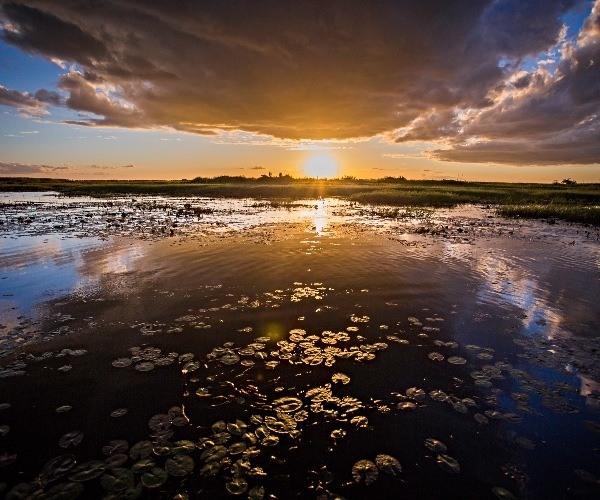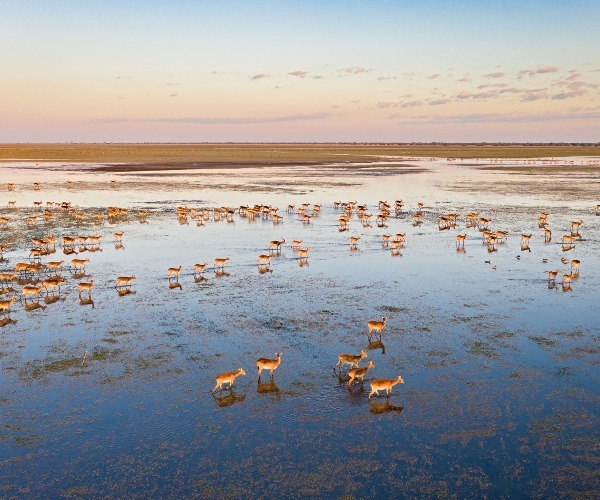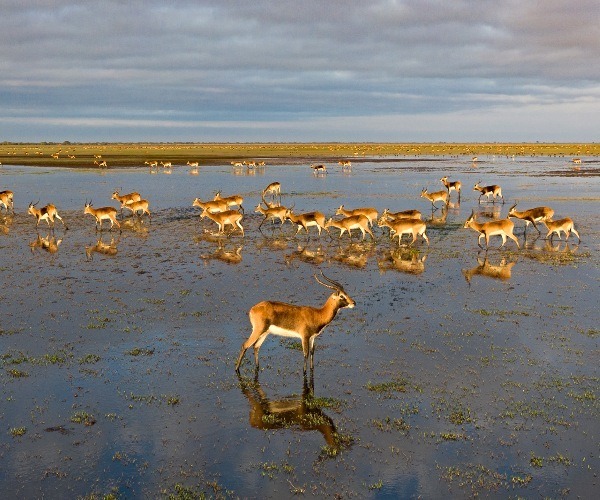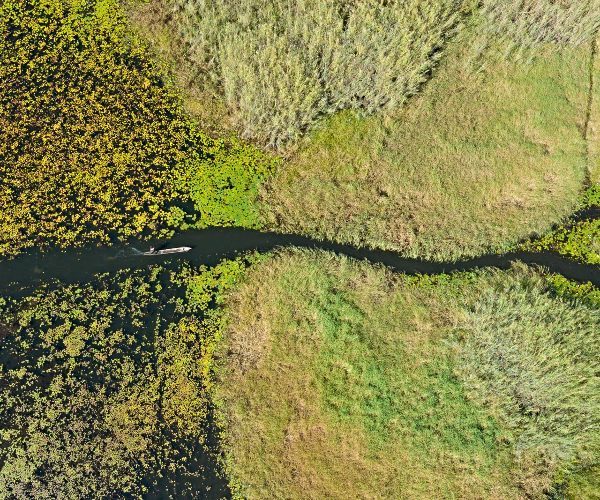The sun peeks over the horizon, turning the sky from grey to a pale pink. We stand, shivering slightly, in the early morning air. Before us, on the floodplain, are thousands of beautiful, endemic, Black Lechwe, barely visible through the thick morning mist. We’re in the Bangweulu wetlands, in north eastern Zambia. Bangweulu means “where the water meets the sky”, which is a perfect description of this extraordinary community-owned protected wetland in north-eastern Zambia. We’ve travelled here with long-time friend and professional wildlife photographer, Patrick Bentley, who is on assignment to photograph the swamps and its inhabitants. Patrick is also the reason we are here before sunrise.
As we will learn on this trip, lighting and timing is everything to a photographer, and if that means getting up at the crack of dawn, because that is the best time to photograph something, then that’s the time we will be getting up! So here we are, it’s 6am, and we’ve been up since 5am, paddling by canoe from the lodge to the floodplains, to witness this incredible sight. Aside from the lechwe, we’ve also come to see the wetland’s other flagship species, the rare and critically endangered Shoebill and the endangered Crowned Crane.

The Bangweulu swamps spreads across 6,000km2 and is an extraordinary, community-owned, protected wetland, with a rich and diverse ecosystem of floodplains, seasonally flooded grasslands, miombo woodlands and permanent swamps, all making it one of Africa’s most important wetlands. The area is home to both wildlife and to about 50,000 people. Bangweulu is unique in terms of wildlife conservation, in that it is made up of Game Management Areas, where community members are permitted to sustainably harvest natural resources.

‘Sustainability’ has not always been the case though. Relentless poaching had exterminated several of the large mammal species, had decimated the black lechwe population, and had left only tiny remnant populations of buffalo, elephant and hartebeest. This over population, overfishing, and unsustainable pressure on wildlife had ultimately led the local community and the Zambian Department of National Parks and Wildlife, to enter into a long-term agreement with African Parks, to sustainably manage and protect the area’s natural resources.

We are standing on the causeway that runs through the middle of the floodplains, there are black lechwe as far as the…
Click Here to Read the Full Original Article at A Luxury Travel Blog…
